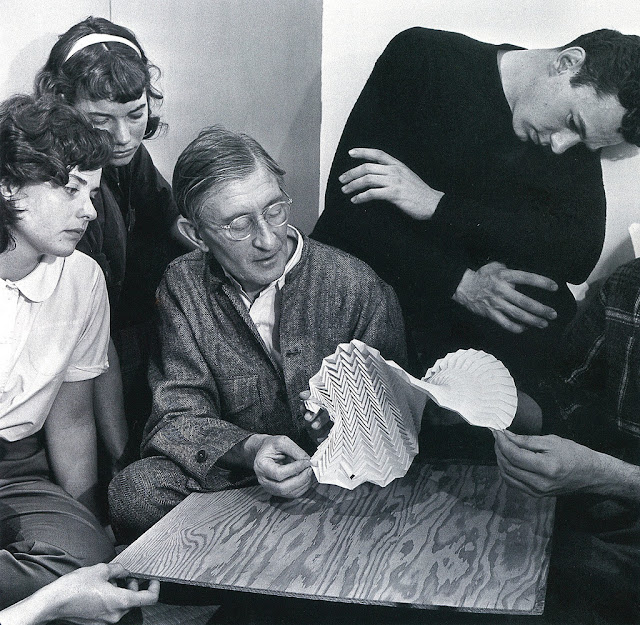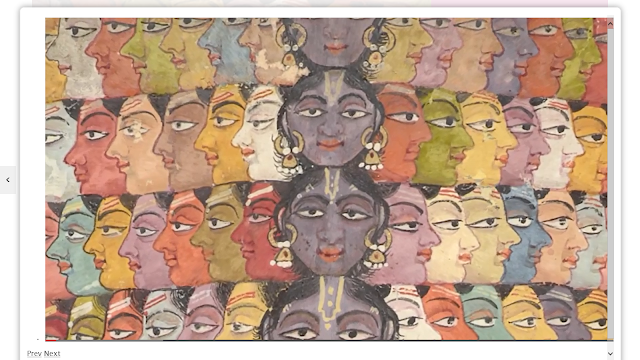The Quiet Indian: American Yoga, India, and the New Orientalism
Sometimes I think we are all turning Indian.
Jennifer, Aluna, and a girl from Iowa who calls herself Indra, as well as myself, are getting ready for a yoga class. We tend to hunt enlightenment in packs, as if it were dangerous to meditate alone. The women are fussing over their hair and makeup. Jennifer looks stunning in bright-red Agni bracelets from Lulu Dharma, a silky looking sports bra by Jala, a mala necklace by One-O-Eight Malas, an off-shoulder blouse (strategically exposing her tantra tattoo) by Be UP, with matching pants by SoLo — all worth a few bills. Her two sister yoginis are similarly feathered and preened. As we all pile into the SUV, the girls begin quibbling about the flavor of the devotional atmosphere: Jen wants to put on Deva Premal, while Aluna insists on a chanted version of the Bhagavad Gita, often called India’s bible. Indra takes advantage of the standoff to dial in her selection: devotional songs by Krishna Das, and soon all three of these American yoginis have joined in vociferously.
My friend Sandhya, visiting from India, is tagging along. Silent all the while, she is dressed in a pair of faded boxer-style gym trunks from her Gitanjali High days in Bangalore and a frayed Pink Floyd T-shirt. She is so attired because she has never swum in the ocean and wants to take the plunge immediately after yoga. Also, she does not own a swimsuit. As the threesome launches into the devotional songs, she looks on — wide-eyed.
During class, the American yoginis and I slip into poses that have become second nature to us, while Sandhya strains, pants, and puffs. After class, the yoginis kiss Sandhya good-bye and thank her for all the bliss that Mother India has brought them. Sandhya, all smiles, but with a kink in her neck, thanks them for their kindness.
As we drive to the beach, Sandhya, a bright young woman from a devout Brahmin family, confides that she was not really able to recognize, in all the Indo-centric activity of the yoga class, much of her day-to-day life and concerns in India. She adds that she is skeptical of the Bhagavad Gita because of its emphasis on doing one’s allotted duty unquestioningly, even if it means, as a soldier, killing.
At the beach, I introduce her to the waves. She wades in hesitantly, but then up to her neck — goose bumps mushrooming on her skin. As she bobs up and down in the swells for the first time in her life, her gym shorts and T-shirt ballooning out, a smile spreads across her face, and her eyes fill with the light of a thousand suns.
At home, we cook up a curry for lunch, and then she sits down at the computer. And this is when I learn why Sandhya knows almost nothing of hatha yoga. As a graduate student in Bangalore, she has had little time. She has been too busy studying, having placed 27th academically, in a field of 150,000 scholars. And she is too busy helping her countrymen. Once in a blue moon she will take a 30-minute vacation, which she feels are the most beautiful moments of her life — riding on her bike through the garbage-littered streets of Bangalore to take in what in her eyes is a supremely enrapturing scene: a massive flock of pigeons alighting from the dome of a mosque into an orange-red-blue sunset.
In her day-to-day life, Sandhya spends any extra minutes she has volunteering for AID (Association for India’s Development), a grassroots organization devoted to disaster relief, education, women’s rights, the battle against GMOs, and many more chronic issues. Usually serene or bubbling with joy, when she speaks of the indignities those in her Motherland have suffered — Bhopal, the floods, Monsanto’s GMO schemes on Indian farmers, the endless indignities Indian women face daily — her eyes flash and her midnight of hair builds like a storm cloud into a flying mass of turbulent energy.
As she sits at the computer, she brings up images of immense suffering in the wake of the recent floods: the worst in India’s history: over 100,000 dead; thousands missing; massive erosion; landslides destroying entire towns, shattering families, and annihilating their means of livelihood in entire regions. I cannot hold back my tears.
At the beach, she had been impressed that, off the top of my head, I knew the Sanskrit word for ocean: samudra. I should. I was arduously schooled in Sanskrit and Indian religious systems at UCSB, which houses one of the finest Religious Studies departments in the world. But seeing these images of India’s suffering and Sandhya’s one-pointed devotion to solving it, I feel that my yogini friends and I, with all our fascination for Mother India, are somehow missing the point: We can chant devotional songs for days, we can recite verses from the great poem that forms India’s greatest scripture, we can all perform Downward Facing Dog and a host of other pretzel-like poses, but can we perform Outward Facing Human — or merely Human Facing Fellow Humans’ Needs?
Sandhya confides that she sees little in our behavior that pertains to the unavoidable existential urgencies of her life and those of her countrymen. As I view the images of devastation, I feel that in the presence of my diminutive friend, whose smile veils a deep seriousness, that I am in the presence of something like an Indic Walt Whitman: “Have you felt proud to get at the meaning of a poem?” the bard asked.
There is a reason why, in all our fascination with India, we remain somewhat blind. After all, as Edward Said pointed out in his groundbreaking book Orientalism, the West has long been in the business of producing images of the East that tend to serve the West’s own interests and needs. Meanwhile, we remain blithely ignorant of its current microcultures and peoples.
Many have journeyed East, whether to the hills of Dharamsala, home of the Dalai Lama, or the ashrams of Rishikesh, where the gaze of Western yogis seeking instruction has called forth a commercialized bazaar of yoga and meditation classes. Talking with Westerners in Varanasi on the banks of the holy Ganges River, anthropologist Mary Korpela found that most thought themselves more spiritual and less material than other Westerners and Indians alike. In her interviews, Korpela found that the self, and not India or Indians, was at the center of these seekers’ quests. Like Jennifer, Aluna, Indra, and myself, these lifestyle migrants failed to really connect with the land that gave them the spirituality they traveled there to find.
We all want to be good human beings. However, whereas many Americans in “turning Indian” have embraced the mysticism of the East, I was struck by how Sandhya and her countrymen have quietly embraced a humanism and humanitarianism formerly associated with the West.
Some 20 million Americans practice hatha yoga. If each of us pitched in just one dollar a month, three cents a day, we could make a huge dent in many of India’s problems.
How to Get Involved
There are two ways to become involved in serving those in India: nonreligious organizations and religious ones.
One of the most effective nonreligious organizations — the Association for India's Development — is made up largely of Indian professionals living in the U.S. who donate their time and other resources to structuring, implementing, and volunteering for programs in India. AID promotes sustainable, equitable, and just development; supports grassroots organizations in India; and initiates efforts in interconnected spheres such as agriculture, energy, education, health, livelihoods, natural resources (including land and water), women’s empowerment, and social justice.
In many ways, life in India seems defined by struggle: the struggle to own arable land, to keep seeds when Monsanto dominates farming, to get mental and physical health care, to avoid sexual violence, to obtain an education, to have reliable electricity, to recover from natural disasters. The statistics are dismaying. For instance, most families in rural India are landless, and a majority of these sustain themselves by laboring on other people’s farms. Workers are paid a pittance ($1–$1.50 a day for men and about 50-75 percent of that for women) and find jobs about 100 days of the year. For women, the literacy rate is 20 percent lower than men’s, a rape occurs every 34 minutes, and crimes against women went up 150 percent between 1993-2000.
AID is dedicated to partnering with people and groups to understand these myriad problems, come up with solutions, and support training, workers, and organizing in these fields. And the group has been effective. Since 1997, AID’s Eureka Child initiative has focused on innovative teaching techniques for science, math, and reading based on extensive work with school children and field experimentation. When the government of Tamil Nadu requested AID training for its teachers in 2006, after an amazing response from children and teachers that reached 450,000, reading skills improved by 30 percent.
Nandini Goel, a child prodigy at computers, has begun a small-scale, grassroots project in Delhi, India — a computer school for girls from impoverished families. Nandini volunteers all her spare time to meditation and to instructing girls less fortunate then her. See Educate My Girl here.
In addition to secular organizations, many spiritual leaders see selfless service as a spiritual path.
Mata Amritanandamayi, popularly known as Amma, supports charitable work to alleviate the burden of the world’s poor by meeting their five basic needs — food, shelter, education, health care, and livelihood — wherever and whenever possible.
The late saint Sai Baba's organization performs Annadan (feed the hungry) service in India on the last Thursday of the month. Saibaba.org also partners with Food Banks across the U.S. in their mutual fight against hunger.
Vanessa Stone’s Amala Foundation, in partnership with the Bhatti Mines School in New Delhi, India, has offered 200 children an alternative to child labor, a way out of extreme poverty, hope for the future, and the freedom to thrive.
Meher Baba saw selfless service as the spiritual path. As a college youth walking home from school, he chanced upon an aged Muslim saint living beside the road under a neem tree. She beckoned the boy over, and when he leaned down, she kissed him on the forehead. Immediately, he became absorbed in transcendental bliss, losing all awareness of mind and body for months. His parents consulted with various doctors and spiritual teachers, none of whom was able to help him, until they dragged him to the abode of Upasni Baba. When the saint witnessed the boy approaching, he picked up a nearby stone and hurled it at the young man’s forehead. With that blow, Meher Baba regained awareness of mind and body. Eschewing meditation and other spiritual practices, he took a vow of silence and taught instead by his actions, administering to the needs of lepers as well as helping God-intoxicated souls integrate their fathomless inner infatuation with quotidian demands.
Perhaps upon awakening spiritually, it is natural to become an Outward Facing Human.
Many of the world's problems are due to overpopulation and carbon. Those in low-lying, impoverished areas are disproportionately vulnerable to the effects of global warming. And in many instances, these are the groups that are living most sustainably. One way we can best serve such populations is by calculating our carbon footprint, and whittling down our consumerism.
The Kogi tribe in the Heart of the World video are acutely aware of their natural environment. Also, their environment includes all of earth's ecological zones, from tropical rainforest to tundra. Thus, their territory provides an instrument that they can read in order to monitor what is happening to the globe as a whole. They are quite wise in this regard. They have been living sustainably as long as they have existed. If they do not have kitchen appliances or SUVs, that is to their credit. We as a species need to go in that direction, or face severe consequences. We in the most blatantly consumerist societies need to understand that Nature is not a place we visit. Nature is our home. With a carbon shell isolating us all from Nature, we are shielded from the effects of global warming. But famers, gardeners, ranchers, surfers, meteorologists all know that something is terrible wrong. Fruit trees that have always given plums in June are now giving plums in December.
We can change. The fate of the earth is in our hands. We have curtailed the use of freon gas and have almost healed the ozone hole. But we need to consume less and lead simpler, more content, less carbon-greedy lives, in order to protect future generations and the planet.
https://www.eta.co.uk/environmental-info/air-travels-impact-on-climate-change/
http://www.davidsuzuki.org/issues/climate-change/science/climate-change-basics/air-travel-and-climate-change/











Comments
Post a Comment